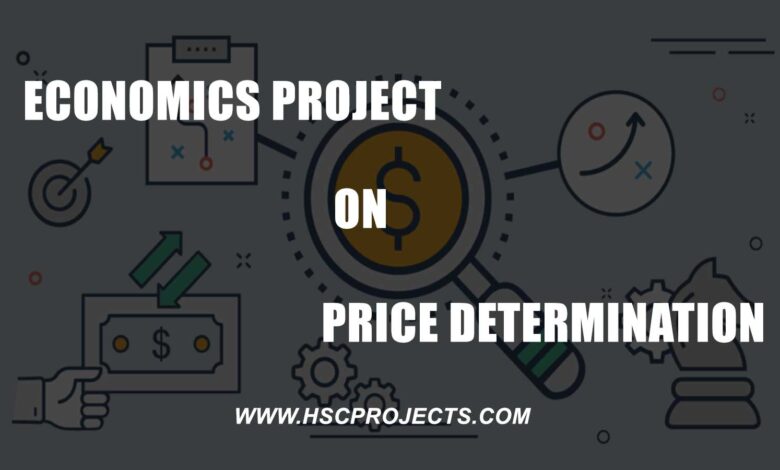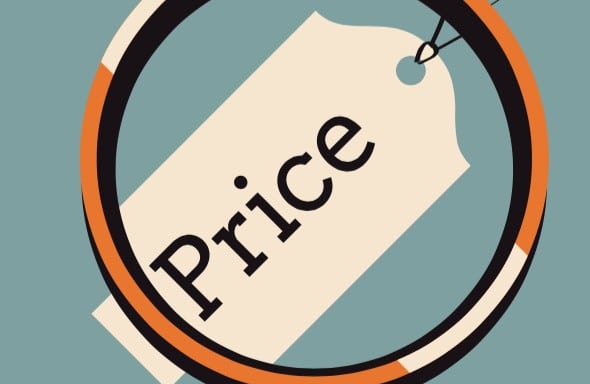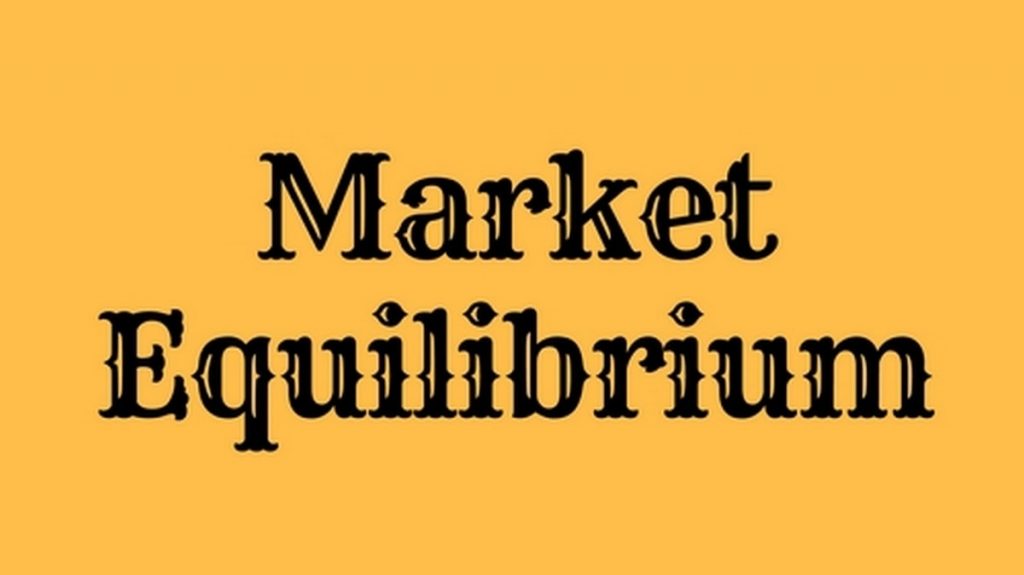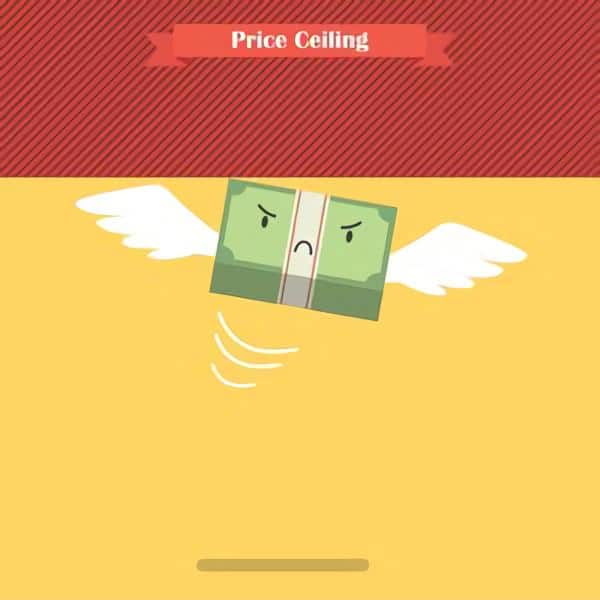
Economics Project on Price Determination
INTRODUCTION
Supply

Producers want to sell as many units as possible at as high a price as possible. Selling a $5 product for $100 is a great deal for any entrepreneur. However, the lower the final price the fever units of product or service provider will put into circulation. Thus supply or the amount of product or service offered increases as the price increases.
Demand

Customers will generally demand more of a product at a lower cost. The law of demand states that if all other factors remain equal the higher the price of a good the fewer people will demand that good, in other words, the higher the price the lower the quantity demanded.
Price

The price of an item is the point where the supply at a given price intersects the demand at a specific price. By determining how many units the supplier will provide at a given price and overlaying that with how many units the consumers will buy at given price economists can determine the “equilibrium point” the point where suppliers and customers are both willing to buy a certain amount of product at a certain price. Pricing at the equilibrium point is efficient because suppliers will produce only what the market will purchase without over-or producing.
FACTORS AFFECTING PRICE FIXATION

Competitors
A huge impact on pricing decisions. The relative market shares of competitors influence whether a business can set prices independently, or whether it has to follow the lead shown by competitors.
Costs
A business cannot ignore the cost of production or buying a product when it comes to setting a selling price. In the long term, a business will fail if it sells for less than its cost.
The State Of The Market For The Product
If there is a high demand for the product but a shortage of supply then the business can put prices up.
The State Of The Economy
The same products are more sensitive to changes in unemployment and workers’ wages than others. Markers of luxury products will need to drop prices especially when the economy is downtown.
The Bargaining Power Of Customers In The Target Market
An individual customer has a supermarket. However, an industrial customer that buys substantial quantities may be able to negotiate lower or special prices.
Other Elements Of Marketing Mix
The distribution channels used will affect price-different prices that might be charged for the same product sold directly to consumers via intermediaries. The price in the decline stage of the product life cycle will need to be lower.
PRICE DETERMINATION
- If a seller fixes a high price, the quantity supplied will be more than the quantity demanded. The seller aims to get maximum profit.
- If a seller fixes a low price quantity demanded is more than the quantity supplied (according to the law of demand, the buyer of a commodity buyer is to get maximum satisfaction by spending less.
- If at a price both quantities demanded and quantity supplied of a commodity are equal that is called equilibrium price.
Equilibrium Price :
The equilibrium price is the market price where the number of goods is demanded. This is the point at which the demand and supply curves in the market intersect.
MARKET EQUILIBRIUM UNDER PERFECT COMPETITION

Market equilibrium is determined when the quantity demanded of a commodity becomes equal to the quantity supplied. The price determined corresponding to market equilibrium is known as equilibrium price and the corresponding quantity is known as equilibrium quantity.
Important Points About Market Equilibrium Under Perfect Competition
- Each firm is a price taker and the industry is a price maker.
- Each firm earns only normal profits in the long rim.
- Decisions of consumers and producers in the market are coordinated through the free flow of prices known as price mechanisms.
- It is assumed that both laws of supply operate
- The equilibrium price is the price at which the quantity demanded of a commodity is equal to the quantity supplied.
- In an equilibrium price, there is neither shortage nor excess of demand and supply.
- Equilibrium quantity is the quantity of demand and supply at the equilibrium price.
EXCESS DEMAND AND SUPPLY
Excess supply is the situation where the price is above its equilibrium price. The quantity willing supplied by the producers is higher than the quantity demanded by the customers. Excess demand is the situation where the price is below its equilibrium price the quantity supplied is lower than the quantity demanded by the consumers. In each of these situations, market forces will interact to drive the prices to their equilibrium level. When we have higher prices and excess supply manufacturers will have excess inventories.
PRICE CEILING

A price ceiling is a measure of price control imposed by the government on particular commodities to prevent consumers from being charged high prices. Price ceiling can also be understood as a legal maximum price set by the government on particular goods and services to make those commodities attainable to all consumers.
Effects Of Price Ceiling
A price ceiling is practiced in an attempt to help consumers in purchasing necessary commodities that government believes to have become sustainable for consumers due to high prices however price ceiling in a long run can hurt the market and create huge market inefficiencies some effects of price ceiling are :
- Shortage
If the price ceiling is set above the existing market price there is no direct effect. But if the price ceiling is set below the existing market price the market undergoes the problem of shortage. When the price ceiling is set below the market price producers will begin to slow or stop their production process causing less supply of the commodity in the market on the other hand demand of the consumers for such commodities increases with the fall in price and with this imbalance between supply and demand of the commodity shortage is created in the market.
- Government Rationing Queuing
When there is an extreme shortage in the market government begins rationing distribution to restrict the demand of the consumers. Won’t be able to utilize as many goods as they need. Government rationing also results in consumers needing to stay in the queue for a great deal of time and this can be troublesome to the elderly disabled and other people who cannot afford to stay in line for a long time.
- Black Market
Shortage of commodities encourages the black market sellers to begin trading commodities to relatives and friends and they start charging other people prices multiple times higher than that of the price ceiling.
- Degradation Of Quality
Producers won’t be able to generate desirable profit when the government set a price ceiling during such conditions, many producers may use raw materials of comparatively lesser quality to maintain the same or almost the same revenue as before.
PRICE FLOOR

Like price ceiling price floor is also a measure of price control imposed by the government but this is a control or limit on how low a price can be charged for any commodity. It is a legal minimum price set by the government on particular goods and services to prevent producers from being paid very little prices. Price ceiling, as well as a price floor, are both intended to protect certain groups and this protection is only possible at the price of another’s price floor is typically proposed to ensure good income for people involved in farming agriculture and low skilled jobs.
Effects Of Price Floor
The government enforces a price floor to oblige consumers to pay a certain minimum amount to the producers. Government sets a price floor when it believes that the producers are receiving an unfair amount price floor is enforced with the only intention of assisting producers. However, The price floor is enforced with the only intention of assisting producers price floor has some adverse effects on the market these effects are
- Supply Surplus
If the price floor is less than the market equilibrium price then it has no impact on the economy. But if the price floor is set above the market equilibrium price immediate supply surplus can be observed. At higher market price producers increase their supply in contract consumer’s demand for the commodity will decrease and a supply surplus is generated.
- Government Intervention
When the price floor is continued for a long time supply surplus is generated in a huge amount. In the case of producers, surplus producers would have reduced the price to increase consumers’ demands and clear off the stock but since it is illegal so the government has to intervene and buy the surplus inventories. The government may sell these inventories in situations when those commodities are scarce or it can also distribute them to poor people and public entities.
- Minimum Wage And Employment
If the minimum wage is set below the market price no effect is seen. But if the minimum wage is set above market price employers may distribute more work among a few workers and terminate the rest of the workers to not to pay more wage to more workers. The setting price floor will help a few workers in getting higher wages but at the same time, other workers will also have to lose their jobs creating unemployment.
EFFECTS OF CHANGE IN DEMAND AND CHANGE IN SUPPLY
Change In Demand
A change in demand will cause equilibrium price and output to change in the same direction.
- A decrease in demand will cause a reduction in the equilibrium price and quantity of a good
- The decrease in demand causes excess supply to develop at the initial price
- Excess supply will cause prices to fall producers are willing to supply less of the good thereby decreasing output.
- An increase in demand will cause an increase in the equilibrium price and quantity of a good.
- The increase in demand will cause excess demand to develop at the initial price.
- Excess demand will cause the price to rise and as the price rises, producers are willing to sell more thereby increasing output
Change In Supply
A change in supply will cause equilibrium price and output to change in opposite directions.
- An increase in supply will cause a reduction in the equilibrium price and an in the case of the equilibrium quantity of a good
- The increase in supply creates an excess supply at the initial price.
- Excess supply causes the price to fall and the quantity demanded to increase.
- A decrease in supply will cause an increase in the equilibrium price and a decrease in the equilibrium quantity of a good.
- The decrease in supply creates an excess demand at the initial price
- Excess demand causes the price to rise and the quantity demanded to decrease.
Changes In Demand & Supply
- If demand and supply change in the opposite directions then the change in equilibrium price can be determined but the change in the equilibrium output cannot.
- A decrease in demand and increase in supply will cause a fall in equilibrium quantity that cannot be determined.
- For any quantity consumers now place a lower value on the good and producers are willing to accept a lower price therefore the price will fall
- If demand and supply change in the same direction the change in the equilibrium output can be determined but the change in the equilibrium price cannot.
- If both demand and supply decrease consumers wish to buy less and firms which to supply less so the output will fall.
SPECIAL CASES
Effect On Price Due To Increase And Decrease In Demand In this Situation
When the supply of the commodity is perfectly elastic-increase or decrease in demand for a commodity does not cause any change in its price equilibrium quantity tends to change.
When the supply of the commodity is perfectly inelastic-increase or decrease in demand for a commodity causes a change in price equilibrium quantity remains constant.
Effect On Price Due To Increase And Decrease In Supply In this Situation
When demand for the commodity is perfectly elastic-increase or decrease in supply for a commodity does not cause any change in its price and equilibrium quantity tends to change.
When demand for the commodity is perfectly inelastic-increase or decrease in supply for a commodity causes a change in price equilibrium quantity remains constant.
CONCLUSION
Demand describes the behavior of the consumers in the market supply describes the behavior of firms in the market; market equilibrium connects demand and supply and describes how consumers and producers interact in the market. The only determinants of equilibrium price are demand and supply. They are responsible to figure out a price where both the producers and the consumer are ready to sell and buy respectively.
Each firm is a price taker and the industry is a price maker under perfect competition.
In such a freely functioning market the quantity demanded and the quantity supplied are equal to each other at the equilibrium price. However, markets are rarely free from government inference. The government thus interferes through price ceiling and price flooring.
CASE STUDY
Introduction
In August 2017, CNBC reported that: Europeans are consuming more and more butter at times when prices are skyrocketing stockpiles are running low and diary giants are warning of immense storage. “inflation for butter is much higher than for other groceries what’s the difference is the shift in consumer behavior away from vegetable spreads to real butter,” said Rachel Knight a consumer insight director, “people are now willing to pay for something natural and less processed.”
A constant boom-and-bust diary market cycle helps no one, most of all farmers who are at the bottom of the supply chain are facing the biggest volatility risk also despite the rise in butter prices many farmers can’t increase output the shortage would have been less server if there were inventories available to fall back on Mr. Bellany adds, “butter prices will come back but it may take several months but it will not go back to its original levels.
According to producers the rise in the price of cheese that they export has driven them to minimize the production of butter as exporting cheese was beneficial and profitable to them
Changes In Demand And Supply Of Butter
- Increase In Demand: Tastes And Preferences.
Normally butter has an elastic demand due to its close substitutes like margarine and vegetable spread. In Europe, there was an increase in demand for butter due to changes in the tastes and preferences of the people. So since now, people prefer butter over its substitutes the demand for butter rose causing a rightward shift in the demand curve of butter. The per capita consumption rose from 5 to 5.5 US pounds.
- Decrease In Supply: Price Of Related Goods.
In Europe, there was a decrease in the supply of butter causing a leftward shift in the supply curve of butter this was due to a variety of reasons the producers found it more profitable to export cheese rather than to sell butter.
Graphical Representation
When there is a simultaneous increase in demand and a decrease in the supply of a product according to the magnitude of changes three cases can take place.
Fig 1- increase in demand is more than the increase in supply
Fig 2- increase in demand is less than the increase in supply.
Fig 3- increase in demand is equal to a decrease in supply.
Conclusion Of The Case Study
From the analysis, we conclude that: when there is a simultaneous increase in demand and a decrease in the supply of a product the equilibrium price always rises whereas the equilibrium quantity may increase decrease, or remain unchanged.
I learned how the forces of demand and supply affect the price and quantity demanded. I could relate the research to real-life applications.
ACKNOWLEDGEMENT
I would like to express my special thanks of gratitude to my teacher as well as our principal of the school who gave me the golden opportunity to do this wonderful project on the topic which also helped me in doing a lot of research and I came to know about so many new things, I am thankful to them. Secondly, I would also like to thank my parent and friends who helped me a lot In finalizing this project within the limited time frame.
CERTIFICATE
This is to certify that class, Xll has completed the project under my supervision. He has taken proper care and shown almost sincerity in the completion of this project. I certify that this project is up to my expectations and as per the guidelines issued by CBSE.
Teacher’s Signature
Examiner’s Signature
BIBLIOGRAPHY
https://www.google.co.in/search?ei=DKYPW8tIczkvgSzrIbyDA&q=price+determination+in+perfect+competition&oq=price+determination+&gs_1=psy-ab.1.1.35,i39k112j0i6klj0j0i67k1114j0j0i6TR112579.12579.0.17231.1.1.0.0.0.0.381.381.3-1.1.0….0….1c.1.64.psy_ab…0..1…376…0.UbxSUjdbCAE
https://www.google.co.in/search?q-=price+determination&oq=PRI&aqs=chrome.035i39j0j69i60j69i57j69i40.2156j0j78&source=chrome&ie=UTF-8
https://www.google.co.in/search?q=price+determination+in+perfect+competition&source=1nms&tbm=isch&sa=Xfved=oahUKEwjhBevJuK_bAhxcsYBKHck_Btg
DOWNLOAD PDF OF THE PROJECT

Password: hscprojects.com
In order to download the PDF, You must follow on Youtube. Once done, Click on Submit
Follow On YoutubeSubscribed? Click on Confirm
Download Economics Project on Price Determination PDF






